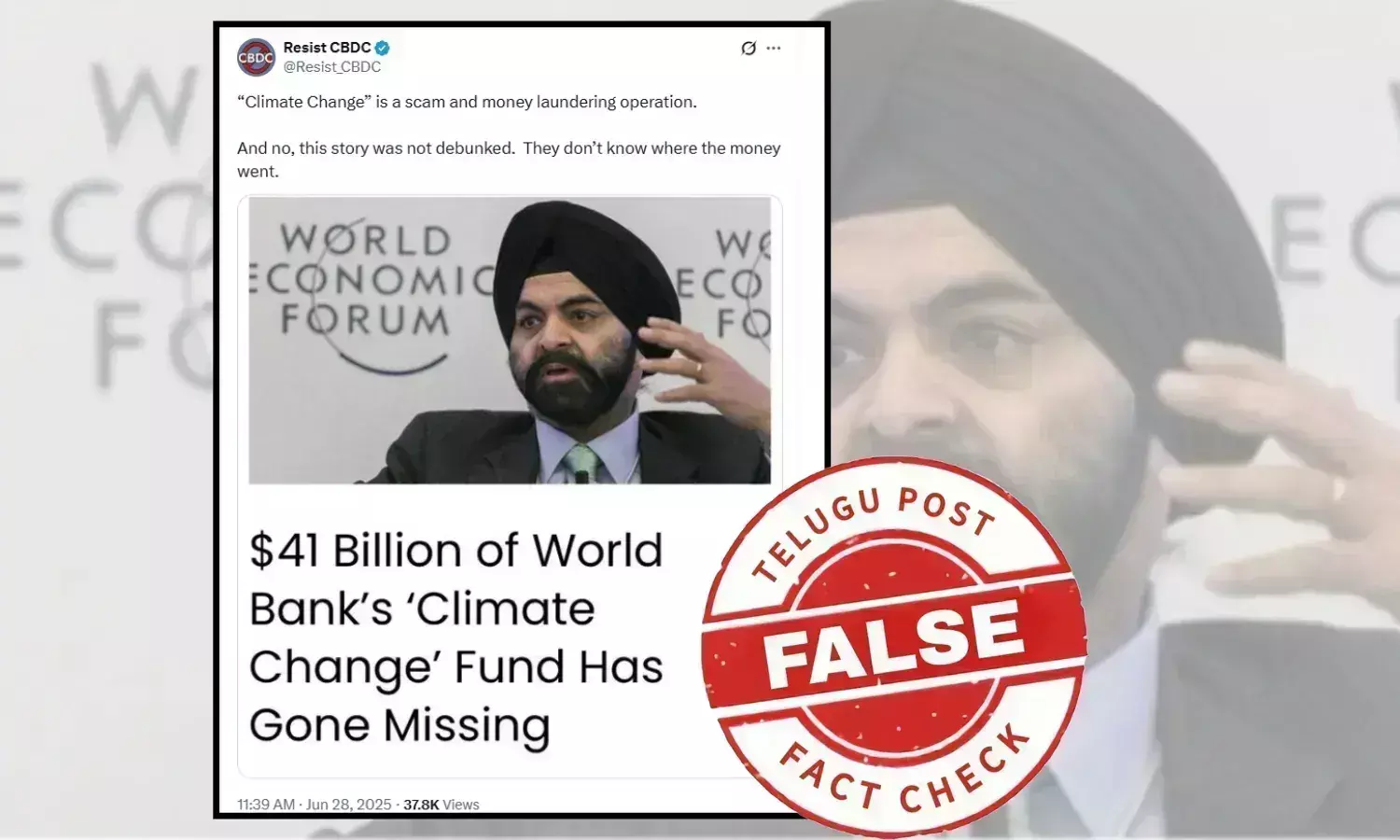Fact Check: Claim of $41 Billion Missing from World Bank Climate Fund is False
The World Bank's primary objective is to reduce poverty and promote sustainable economic development in developing co

Claim :
Oxfam report found $41 billion missing from the climate fund allotted by the World Bank.Fact :
False. Oxfam did not find that funds were missing; the World Bank refuted the claim
The World Bank's primary objective is to reduce poverty and promote sustainable economic development in developing countries. It achieves this by providing financial and technical assistance, policy advice, and research to member nations. The World Bank also focuses on promoting international trade, encouraging capital investment, and fostering environmental protection. The present president of the World Bank is Ajay Banga, who became the president of the World Bank in June 2023. He is an Indian American Business executive.
Meanwhile, a claim that the World Bank’s $41 billion climate fund has gone missing, along with an image of World Bank President Ajay Banga, is in circulation on social media with the caption: “Climate Change” is a scam and money laundering operation. And no, this story was not debunked. They don’t know where the money went.’
Fact Check:
The claim is False. Oxfam's report did not find the funds unaccounted for. In their report, they mention that the Bank did not track whether the projects tagged under climate finance continued to qualify for that definition.
Oxfam is a confederation of 22 independent organizations working in over 70 countries. Oxfam focuses on tackling inequality and injustice through various means, including development programs, public education, campaigns, advocacy, and humanitarian assistance in disasters and conflicts.
When we searched for the report published by Oxfam International about the World Bank, we found an article titled “Up to $41 billion in World Bank climate finance not being properly tracked, Oxfam finds,” published in October 2024. The article states that an Oxfam audit of the World Bank’s 2017-2023 climate finance portfolio found that between $24 billion and $41 billion in climate finance went unaccounted for between the time projects were approved and when they closed.
There is no clear public record showing where this money went or how it was used, which makes any assessment of its impacts impossible. It also remains unclear whether these funds were even spent on climate-related initiatives intended to help low- and middle-income countries protect people from the impacts of the climate crisis and invest in clean energy.
Another report published by Oxfam also stated that, on average, project spending deviated from the original budget by 26% to 43%, either above or below what was committed. We assumed that climate finance elements were just as likely to change as any other part of a project. Based on this, we estimated that the climate finance reported for 2017 to 2023 could be off by $24.28 to $41.32 billion. And here’s the kicker: these discrepancies are untracked in the Bank’s climate finance reporting. We have no idea if that money stayed within climate-qualifying activities, which countries received it, or whether it was spent on mitigation or adaptation (let alone on which specific activities it was invested in). At the same time, we should note that we found no evidence of systematic over- or under-spend, and have no reason to believe any money has been mismanaged or misplaced.
The World Bank released the following statement on its climate finance accounting: “The World Bank Group is by far the largest provider of climate finance to developing countries. Last year, 44 percent of our lending—$42.6 billion—went toward climate adaptation and mitigation. This is up 10 percent from the previous year and close to our COP28 commitment of 45 percent by the end of the current fiscal year. When we approve a project, we systematically assess whether its activities will help reduce greenhouse gas emissions or directly address climate change vulnerabilities. We follow a strict methodology, shared by all multilateral development banks, to calculate the portion of our funding that counts as climate finance. For the last year and a half, the World Bank has been working to become faster, simpler, and more impact-oriented. As part of that effort, we are finding new ways to enhance accountability, transparency, and ensure our projects drive real change. Our approach has been informed by many organizations such as Oxfam and the Center for Global Development, but we have more to do. One area we are exploring is how to provide clearer information on the exact funds disbursed for climate initiatives. Among other ideas, we are considering calculating and publishing climate financing at the end of each project.
Another example is evaluating if we can share how much funding goes to specific components of our public sector operations, which would help external groups better understand our methodology. Such improvements will take time, but are important to help advance a fact-based conversation and prevent inaccurate analysis like the findings in the recent Oxfam report. Contrary to that report’s conclusions, the World Bank accounts for every dollar budgeted and disburses over 95% of the funds allocated. Where a small amount of allocated funds is not deployed, the undisbursed funds are repurposed for other development needs. Our lending benefits from strict oversight and independent audits in line with international standards to ensure all funds are used properly.”
According to the fact check published by aapnews.com.au, the Oxfam report does not suggest World Bank funds are missing but points to a transparency issue that makes it difficult to know precisely what the Bank is delivering in terms of Climate finance.
Therefore, the claim is False.

